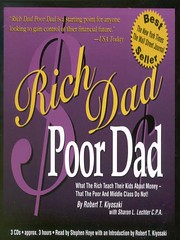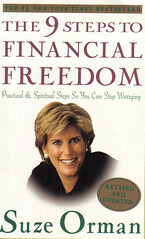Be A Smart Buyer
Set Your Limits.
Have your self a limit. Set the minimum and maximum amount that you wish to spend. Keep on reminding your self about your limit especially when you want to buy something. By giving yourself limits you are aware of the amount of money you have left. Your limits may vary from day to day, depending on the season and things you need. For example, you may need to stretch your limits during holidays. This means you'll give yourself more thoughts about spending more money. But before you stretch your limits, check if you can afford to stretch your budget and see if the other member of the family will approve it.
Be Conscious
Be Conscious
There are some stores that are pro-shoppers while others may not. They are out there to trick you or rip you off. Which means, they are taking money you shouldn't have to pay. The first thing you need to do is to shop around, get different prices on the same things. This is quite time consuming, but it does work to help you save money. One common and easy ways to search for deals and prices is by calling different stores. By calling different stores you get a price range. The price range is the limits a product is selling for. When calling, you may get a high price on an item, and then a low price on the same item.
But even if you do get a cheap price, you need to think about a few things. "Does this store have a reputation for good quality or bad quality?" "Where is this store located?" and most importantly, "Is the company or store honest?". These three things are a big part in being a good buyer, so don't skip them over.
Another thing to look for is how stores are competitive, learn to use this to your advantage. For example, store A has the toy truck for $2.99 in its catalog. Store B has the toy truck for $3.99 in its store. Now which one are you going to buy, of course A . Now what if the B store says to you, bring store A's catalog to our store and we will match that price and also take off an extra 15%, you now save $.45 bringing your total to $2.54. So you see the stores are very competitive, so use it to your advantage. Most of them will match prices if you can bring in the ad. To calculate a percentage you take your first number for example to find 15% of $3.00 you multiply $3.00 by .15. To do this just take off the percentage sign and slide the decimal two spots over to the left, so you are putting the decimal in front of the percentage number. So it would be $3.00 X .15= .45 that is how you calculate a percentage.
But even if you do get a cheap price, you need to think about a few things. "Does this store have a reputation for good quality or bad quality?" "Where is this store located?" and most importantly, "Is the company or store honest?". These three things are a big part in being a good buyer, so don't skip them over.
Being smart with money is a fundamental. You need to learn the tricks of sales. For instance, would you rather take $2 off of a $10.00 purchase or 30% off a $10.00 purchase. Your first choice probably was the first one. But the truth is 30% off, is a much better deal. It would take the purchase down to $7.00. So don't be impulsive, stop to take a look at the other deal.
Another thing to look for is how stores are competitive, learn to use this to your advantage. For example, store A has the toy truck for $2.99 in its catalog. Store B has the toy truck for $3.99 in its store. Now which one are you going to buy, of course A . Now what if the B store says to you, bring store A's catalog to our store and we will match that price and also take off an extra 15%, you now save $.45 bringing your total to $2.54. So you see the stores are very competitive, so use it to your advantage. Most of them will match prices if you can bring in the ad. To calculate a percentage you take your first number for example to find 15% of $3.00 you multiply $3.00 by .15. To do this just take off the percentage sign and slide the decimal two spots over to the left, so you are putting the decimal in front of the percentage number. So it would be $3.00 X .15= .45 that is how you calculate a percentage.











No comments:
Post a Comment